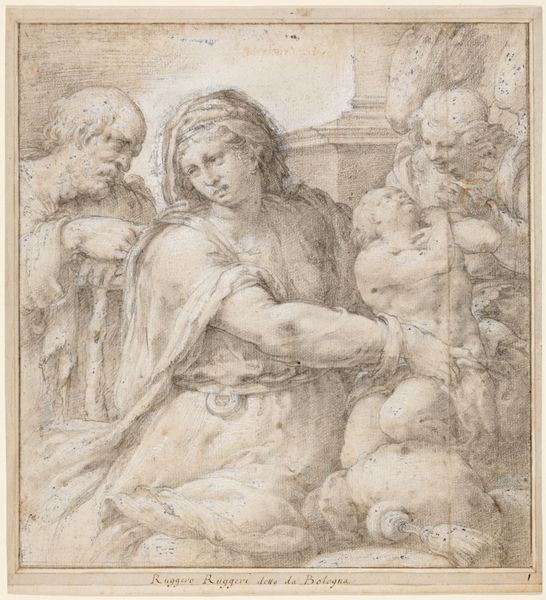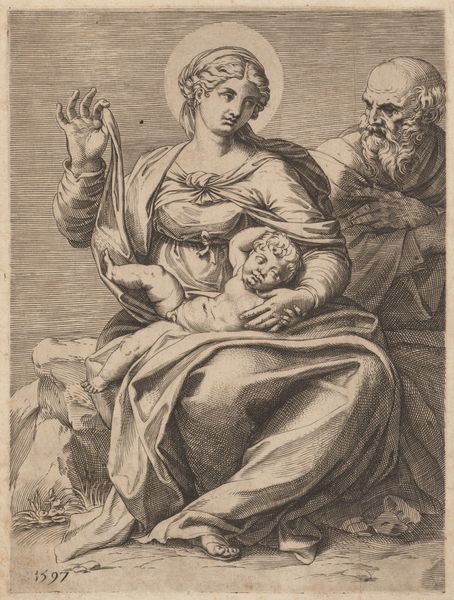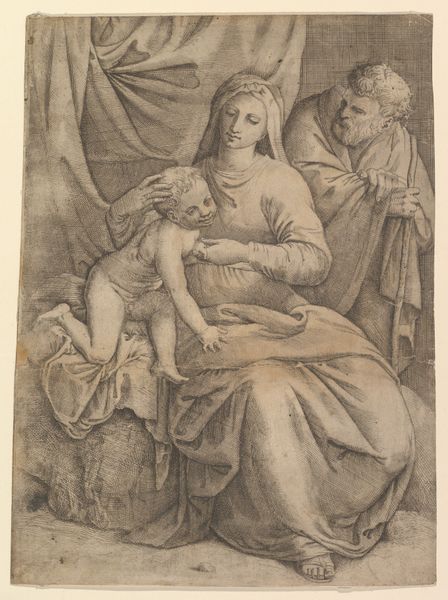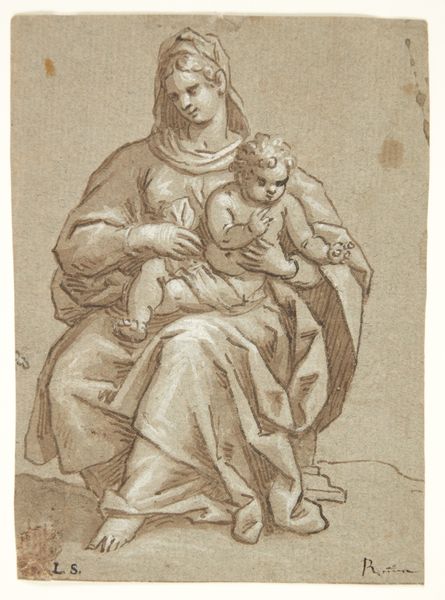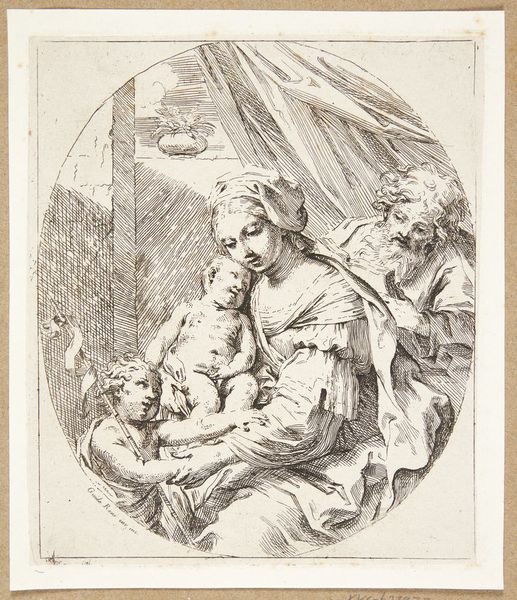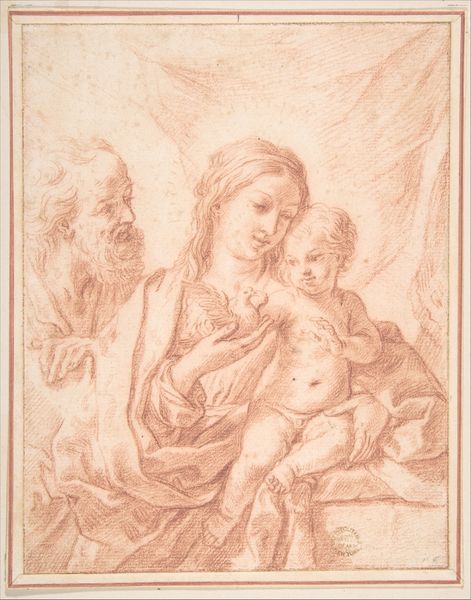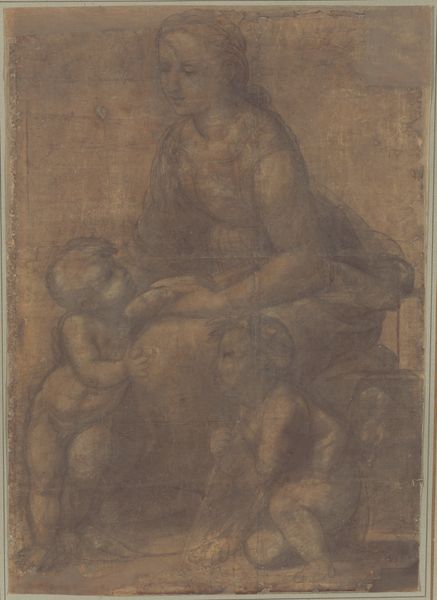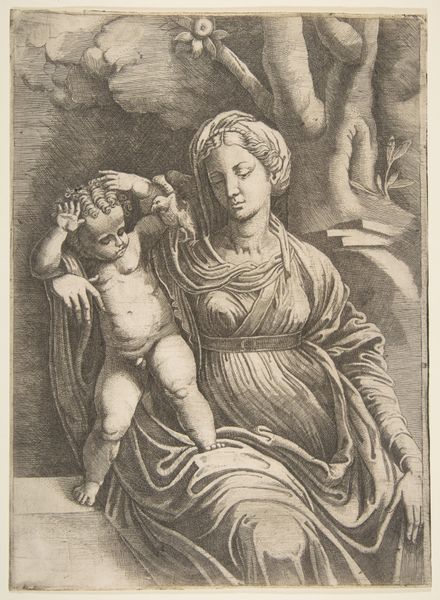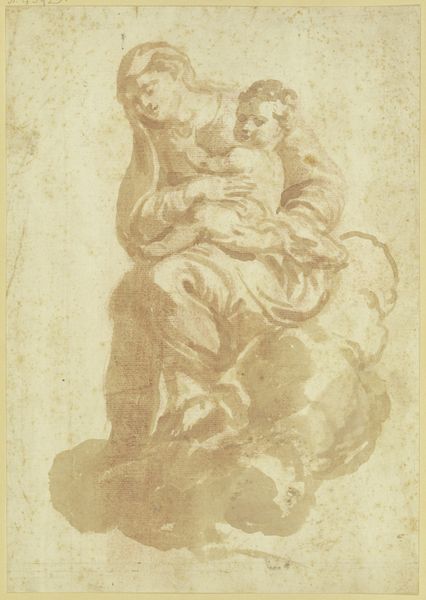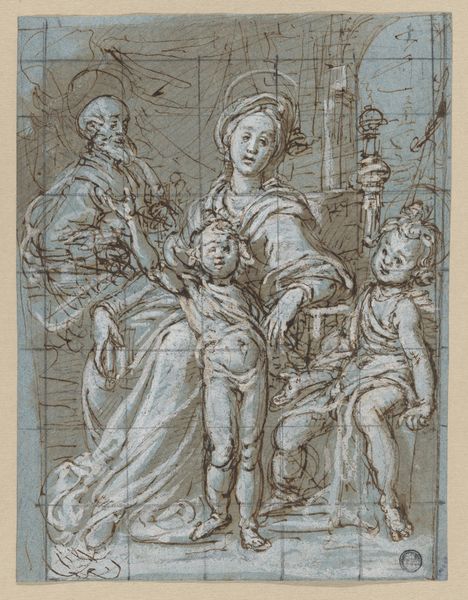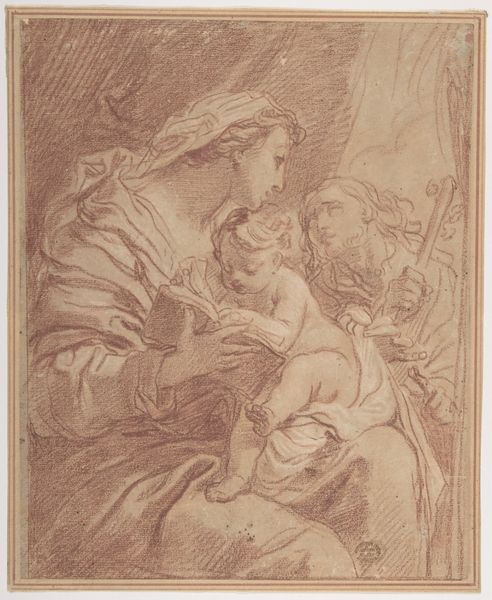
drawing, ink, charcoal
#
portrait
#
drawing
#
charcoal drawing
#
figuration
#
charcoal art
#
ink
#
charcoal
#
history-painting
#
italian-renaissance
Dimensions: overall: 41.4 x 25.3 cm (16 5/16 x 9 15/16 in.)
Copyright: National Gallery of Art: CC0 1.0
Editor: Here we have Pellegrino Tibaldi’s charcoal and ink drawing, "The Holy Family with the Infant John the Baptist," created around 1546. I find the composition really interesting, almost pyramidal with the figures grouped so closely. How would you interpret the symbolism in this drawing, especially considering the figures involved? Curator: The gathering of the Holy Family, infused with the young John the Baptist, is indeed potent. John's presence, even in infancy, prefigures his role as a harbinger. Notice how Tibaldi renders Mary – not just as a mother, but almost as a throne. How does that strike you? Editor: I see what you mean about the throne aspect; her posture and the way the fabric drapes around her definitely give her a regal presence. Is there a significance to her holding the infant Jesus in this way? Curator: The visual vocabulary around Mary often reflects the idea of her as the "Theotokos", the God-bearer. Presenting Jesus in this way reinforces his divine nature. The somewhat somber mood also anticipates the future sacrifices. What feelings does the drawing evoke in you? Editor: There's a tenderness but also a sense of foreboding, especially when you think about what the future holds for these figures. I'm struck by how a simple drawing can carry so much emotional weight. Curator: Exactly. The visual symbols layered within resonate with centuries of cultural memory. The drawing, seemingly simple, becomes a powerful meditation on faith, destiny, and the human condition. The artist's rendering, beyond mere representation, gives it an ability to speak across time. Editor: That's fascinating. I'll definitely look at drawings differently now, thinking about their symbolic layers and cultural significance.
Comments
No comments
Be the first to comment and join the conversation on the ultimate creative platform.
